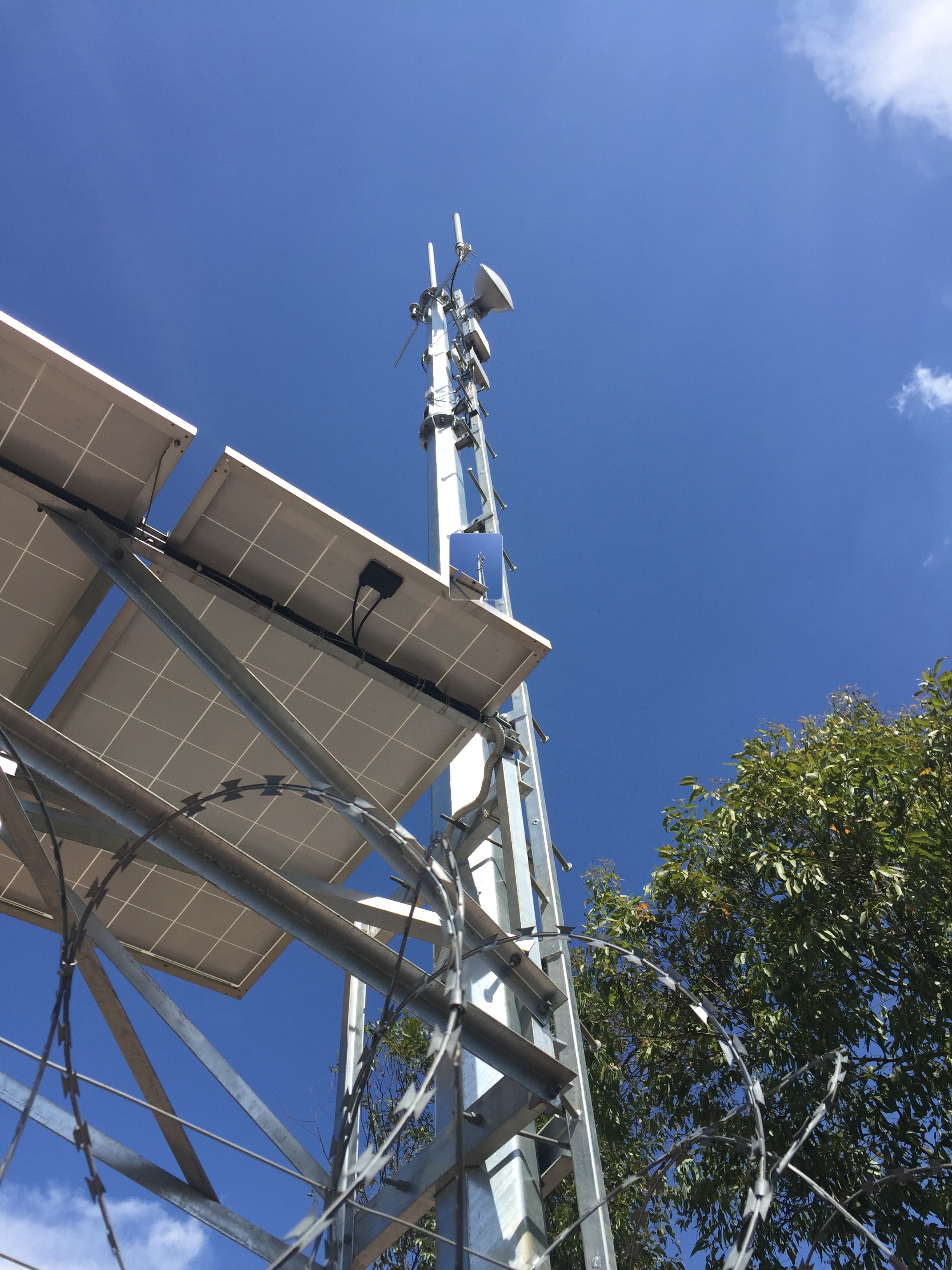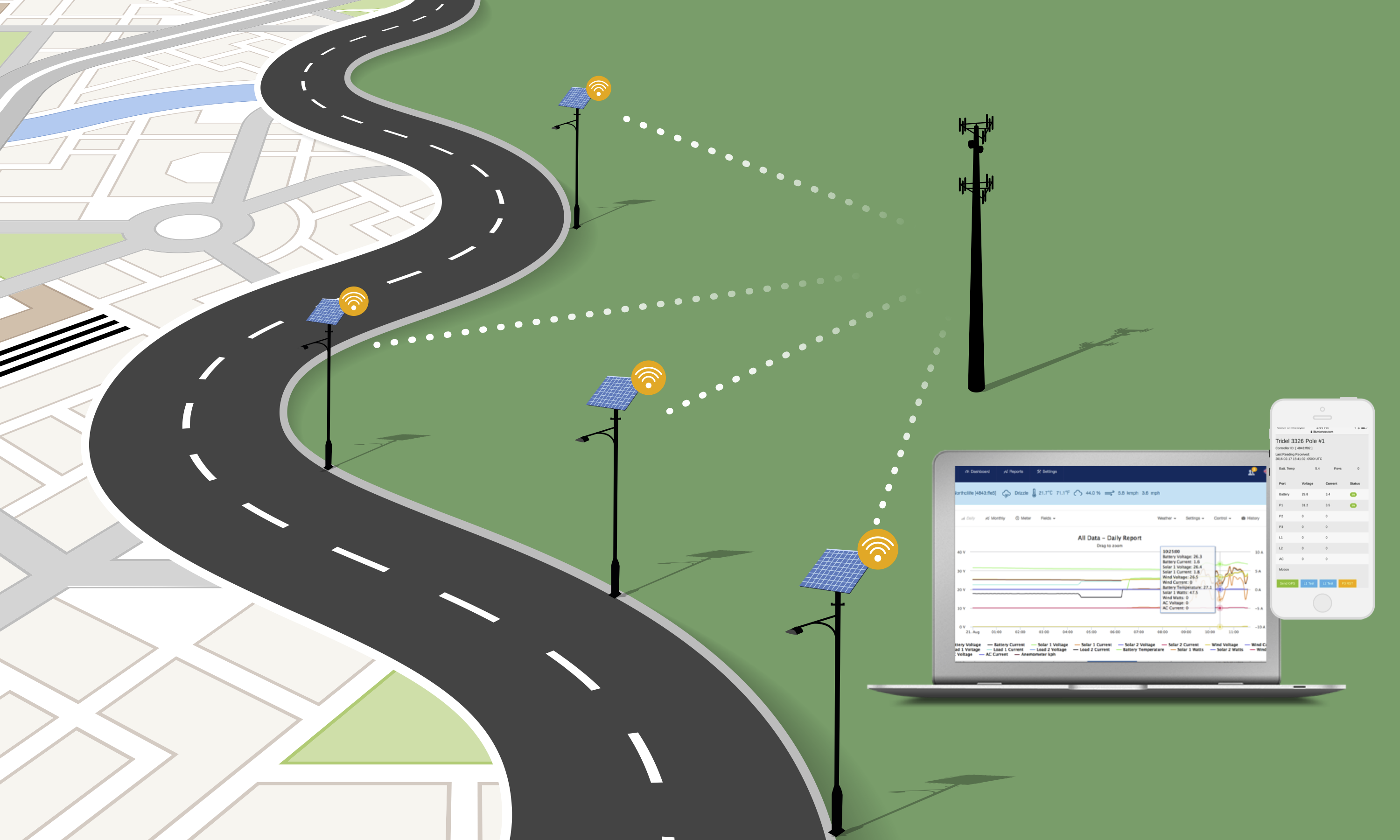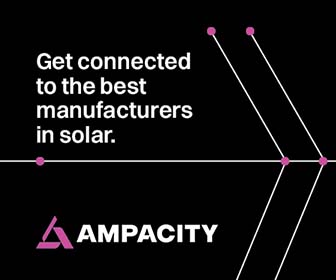Smart Off-Grid Will Revolutionize Solar Power
Until now, solar power has been hindered by one simple truth: the sun doesn't always shine.
If you had an off-grid system such as a street light and there was bad weather for more than a few days, the battery would drain, and eventually the light would go out. That's it! There was no way to predict how long the battery might last, or to change the settings to preserve power. It's like driving a car with no warning light on the dashboard to indicate when you're low on gas.
Today, solar and wind energy are powering critical infrastructure, from streetlights to telecom systems to security cameras and more. This means it is no longer viable for these devices to be unmonitored and unmanaged, or to fail after a few days with no sun or wind.
 Connecting solar to the cloud
Connecting solar to the cloud
Smart off-grid technology is the next stage in the solar power revolution. A smart off-grid controller and a built-in communications network embedded in the solar-powered device streams critical data in real-time to a cloud-based management system. By connecting these devices to the cloud, infrastructure owners can use a Software-as-a-Service (SaaS) app to remotely monitor, manage, and control the smart off-grid systems in real-time, 24/7 via a smartphone or laptop. This includes automated estimation of energy generation based on current load and local weather forecasts, around-the-clock monitoring, automated alerts and alarms, the ability to remotely change load profiles to extend battery life, and in-depth analysis of solar power generation and consumption performance over time.
In terms of how it works in practice, let's take our example of bad weather. If there's an extended period of bad weather predicted, the amount of sunlight hitting a solar panel is likely insufficient to keep the batteries charged and power the lights over that period. With smart off-grid, the person responsible for the lights will receive an alert via text or email from the cloud management system, and they can proactively turn down the luminosity of the lights to preserve battery power and prevent an outage.
The ability to monitor, manage, and control smart off-grid systems makes off-grid devices significantly more reliable. In one case, a smart off-grid system kept a solar-powered street light on for 10 continuous days without sunlight - whereas, typically, it would have failed in only two or three days. In cases where there is an outage, the infrastructure owner can access the data history to make it easy to troubleshoot the issue, then either fix it remotely, or send an engineer with the right replacement part.
Smart off-grid reduces the cost of installing and maintaining off-grid systems by up to 80 percent, often making it considerably more price-competitive than an on-grid system. In one example, a Canadian city wanted to install street lights in a busy district; connection to the grid would have cost $35,000 per street light -- more than three times the cost of installing smart off-grid power.
Where smart off-grid will flourish first 
In the same way that India leapfrogged the U.S. in the adoption of smartphones, an emerging market, such as sub-Saharan Africa, may become the leader in using solar power for most of its critical infrastructure.
This is because low-cost, reliable solar power has the greatest growth potential in countries where existing electric grid infrastructure is underdeveloped. Sub-Saharan Africa certainly fulfils this criteria: 600 million people lack access to electricity. For those who do have access to electricity, power cuts are frequent; they often have to rely on diesel fuel generators as a back-up when the power grid fails - a noisy, dirty and expensive solution.
However, according to a report by the University of Michigan, "Although sustainable energy systems are being installed in the region, there is a severe lack of technical expertise regarding the maintenance and repair of energy systems, resulting in inefficiencies and shortened system lifecycles. Without ensuring the productivity of new sustainable energy systems, the region will likely continue to rely on diesel fuel generators."
Smart off-grid can change this reality for sub-Saharan Africa by making off-grid systems more reliable. Infrastructure owners can ensure that these systems are being installed and maintained correctly, which increases the lifespan considerably. This technology has already been installed in Harare, Zimbabwe, where it controls street lights on one of the city's main thoroughfares. Similar projects are already underway across Nigeria, Rwanda and Ghana.
The smart off-grid solar revolution
Smart off-grid will transform the power industry in the same way that wireless communications and smartphones changed the telecommunications industry.
A decade or so ago, everyone had a landline phone. If you were one of the lucky few, you might have a Blackberry. Fast forward to today: the landline is dead - smartphones have taken over our lives. Over 30 percent of the world's population owns a smartphone, and two-thirds of millennials in the U.S. aged 25 to 29 live in a household without a landline.
The same paradigm shift is going to happen to the power industry. In a new digital age of wireless communications and cloud computing, it seems antiquated that we are still tied to power cables and transmission towers. Not only is this monolithic power grid infrastructure costly to install and maintain, it is also inherently vulnerable to systemic failure from cyberattacks, terrorism, and storms - as we witnessed most recently in Puerto Rico.
It is only a matter of time before smart off-grid solar power gains a foothold as a cleaner, cheaper, reliable alternative to grid electricity. We say, viva la revolución!
%5B8%5D.png) Miriam Tuerk is CEO and co-founder of Clear Blue Technologies. Clear Blue Technologies, the Smart Off-Gridâ„¢ company, was founded on a vision of delivering clean, managed, "wireless power" to meet the global need for reliable, low-cost, solar and hybrid power for lighting, telecom, security, Internet of Things devices, and other critical systems. Today Clear Blue has over 300 customers and 2,500 systems under management across 33 countries, including the U.S. and Canada.
Miriam Tuerk is CEO and co-founder of Clear Blue Technologies. Clear Blue Technologies, the Smart Off-Gridâ„¢ company, was founded on a vision of delivering clean, managed, "wireless power" to meet the global need for reliable, low-cost, solar and hybrid power for lighting, telecom, security, Internet of Things devices, and other critical systems. Today Clear Blue has over 300 customers and 2,500 systems under management across 33 countries, including the U.S. and Canada.
Clear Blue Technologies | www.clearbluetechnologies.com
Volume: 2018 March/April








.png?r=3584)



